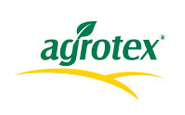
Starting 1 January 2022, the tax authorities introduce a new financial-fiscal reporting obligation, namely the standard audit file for tax, SAF-T or declaration D406.
The companies will submit the new SAF-T informative statement regarding the accounting and fiscal records, the purpose of this reporting being the automated exchange of accounting and fiscal information between the taxpayers and the tax authorities.
The D406 return is submitted monthly or quarterly, depending on the fiscal period applicable for VAT. The elements that will have to be reported refer, among others, to information regarding suppliers, customers, purchase / sale invoices, payments, movements of goods, assets, products, balances, accounts, etc.
In terms of deadlines, the “old” large taxpayers will have the SAF-T reporting obligation starting 1 January 2022, and the “new” large taxpayers starting 1 July 2022. Medium taxpayers will report starting 1 January 2023, and small taxpayers starting 1 January 2025.
We recommend that all taxpayers check their tax status and begin preparations for SAF-T reporting in order to ensure that they will be able to comply with the new reporting obligation, analyse existing information in internal IT systems, identify and correct any issues that may arise in relation to the mandatory reportable information and identify the most suitable solutions for the implementation and generation of the SAF-T D406 Statement.
Our team of consultants, both in the field of tax and accounting and IT specialists, will provide you with solutions regarding the implementation of SAF-T reporting in order to support the needs and specifics of your company.
Darian DRS by numbers:
STEPS NECESARY TO GENERATE SAF-T REPORTING
Darian team can assist you with the following steps necessary to be followed in order to generate SAF-T reporting according to current tax requirements:









